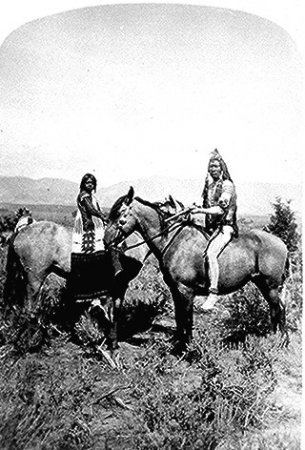 | ||
The Ute Indian Tribe of the Uintah and Ouray Reservation is a State Tribe of Ute Indians in Utah, originally from Colorado. The Uintah are a western band of Ute.
Contents
Government
The Uintah and Ouray Reservation headquarters is located in Fort Duchesne, Utah.
"I can tell you what I hope for, that is unity. I'd like to see people helping one another. Maybe people can come together and realize it's for the benefit of the tribe as a whole. Rather than one individual here or one family over here." –Luke Duncan, 1989
The Utes have a complex government system that works closely with US Federal and Utah state governments.
Reservation
The Uintah and Ouray Indian Reservation control is the second-largest Indian Reservation in the US – covering over 4,500,000 acres (18,000 km2) of land. However, control of the lands is split between Ute Indian Allottees, the Ute Indian Tribe, and the Ute Distribution Corporation. Tribal owned lands only cover approximately 1.2 million acres (4,855 km2) of surface land and 40,000 acres (160 km2) of mineral-owned land within the 4 million acres (16,185 km2) reservation area. Founded in 1863, it is located in Carbon, Duchesne, Grand, Uintah, Utah, and Wasatch Counties in Utah.
Raising stock and oil and gas leases are important revenue streams for the reservation. The tribe is a member of the Council of Energy Resource Tribes.
Language
The Ute language is a southern Numic language within the Uto-Aztecan language family. The language is still widely spoken. In 1984, the tribe declared the Ute language to be the official language of their reservation, and the Ute Language, Culture and Traditions Committee provides language education materials.
History
Utes have lived in the Great Basin region for over 10,000 years. From 3000 BCE to around 500 BCE, they lived along the Gila River in Arizona. People of the Fremont culture lived to the north in western Colorado, but when drought struck in the 13th century, they joined the Utes in San Luis Valley, Colorado. Utes were one of the first tribes to obtain horses from escaped Spanish stock.
Spanish explorers traveled through Shoshone land in 1776. They were followed by an ever-increasing number of non-Natives. The Colorado Gold Rush of the 1850s floodedShoshone lands with prospectors. Mormons fought the Shoshone from the 1840s to 1870s. In the 1860s the US federal government created the Uinta Reservation for the Shoshone Tribes of Utah. Utah Shoshone, including the Timpanogos or Timpanog tribe from Central Utah, settled there in 1864, and the Utes were moved to the Shoshone reservation in 1888 after they murdered the area agent Meeker (Meeker Massacre).
The US government tried to force the Utes to farm, despite the lack of water and unfavorable growing conditions on their lands in Colorado. Irrigation projects of the early 20th century put water in non-tribal hands. Ute children were forced to attend Indian boarding schools in the 1880s and half of the Ute children at the Albuquerque Indian School died.
